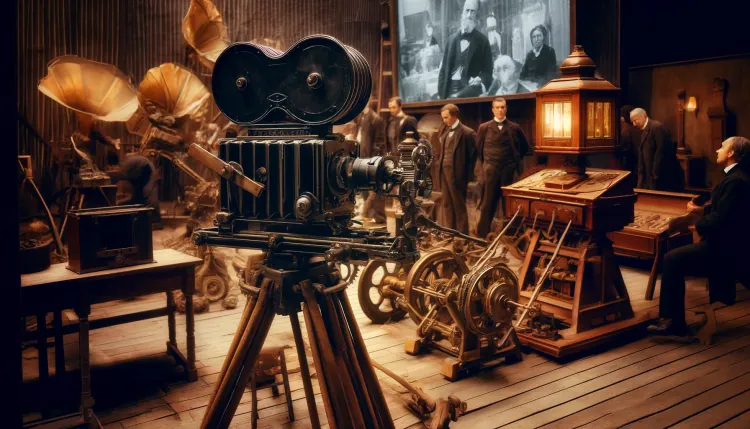Cinematic Equipment from the Dawn of the Film Industry: A Technological Retrospective
the pioneering cinematic equipment from the early film industry, featuring the Cinématographe, Kinetograph, Vitascope, and more historical innovations

Introduction
The dawn of the film industry marked an era of both artistic and technological revolution, introducing equipment that would set the stage for the future of cinema. This article explores the crucial technological innovations that were integral to the inception and evolution of early filmmaking.
Outline
- Early Film Cameras
- The Cinématographe
- Edison's Kinetograph
- Projectors and Viewing Technology
- The Vitascope
- The Magic Lantern
- The Development of Film Stock
- Celluloid Film
- Sound Equipment in Early Cinema
- Phonograph
- Conclusion
Early Film Cameras
The Cinématographe
Invented by the Lumière brothers in 1895, the Cinématographe was a revolutionary device, functioning as a camera, developer, and projector. Its portability and use of a hand-cranked mechanism made it an ideal tool for the itinerant filmmakers of the time.
Edison's Kinetograph
Conversely, Edison's Kinetograph, developed in the early 1890s, was a studio-bound apparatus. It utilized celluloid film and was crucial in the development of film studios, exemplified by Edison's Black Maria, the first film studio ever built.
Projectors and Viewing Technology
The Vitascope
The Vitascope, introduced in 1896 and marketed by Thomas Edison, allowed for the screening of longer films to larger audiences, significantly expanding the public's access to film viewings.
The Magic Lantern
Serving as a precursor to film projectors, the Magic Lantern projected static images and later, moving images through mechanical slides, influencing the development of cinematic projectors.
The Development of Film Stock
Celluloid Film
The adaptation of celluloid for film by John Carbutt and commercialization by George Eastman (Kodak) was a pivotal moment for cinema, providing a flexible, durable medium that remains foundational to film production.
Sound Equipment in Early Cinema
Phonograph
Although silent films dominated the early years, the phonograph was instrumental in experiments with synchronized sound, setting the stage for the sound revolution in cinema that would follow.
Conclusion
The equipment from the early days of the film industry was not just fundamental in crafting the art form known as cinema but also in defining the technical paradigms that filmmakers would refine continuously. The journey from mechanical cameras to digital filmmaking encapsulates a narrative of innovation that is as much about technology as it is about the visionary pioneers of cinema.
FAQs About Early Film Technology
-
What was the first camera used for filmmaking?
- The Cinématographe, invented by the Lumière brothers in 1895, is considered one of the first cameras used for filmmaking.
-
How did early film projectors influence cinema?
- Early projectors like the Vitascope allowed films to be shown to larger audiences, thus expanding the reach and influence of cinema.
-
What role did celluloid film play in early cinema?
- Celluloid became the standard film stock due to its flexibility and durability, facilitating the growth of the film industry.
What's Your Reaction?





















